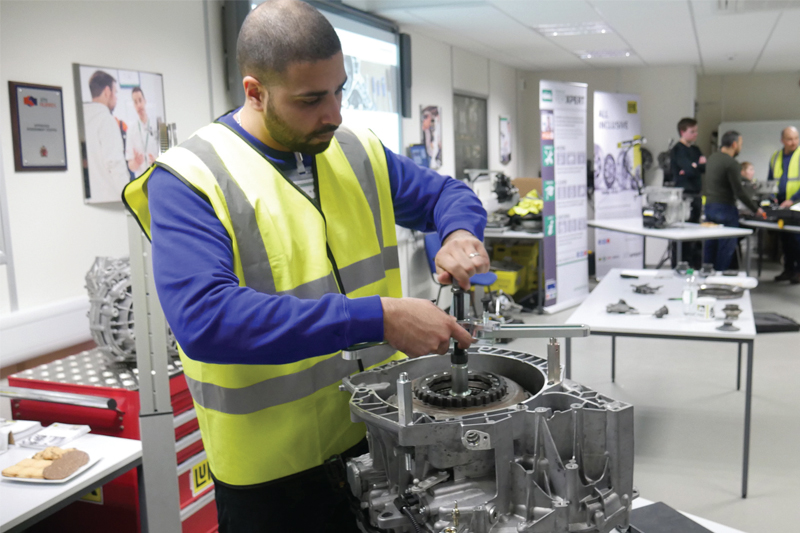
REPXPERT Alistair Mason discusses why manufacturing standards matter.
OEMs design, engineer and produce clutches to the strictest material and quality standards available. Whilst price is and always will be a factor, quality, availability and value-added services also play a crucial part when it comes to technicians selecting the components they choose to fit. Good technicians always want to complete the job first time to ensure their reputation remains intact amongst their customers.
‘Make an informed decision’
Technicians should make an informed decision as to whether they fit an OE standard clutch from an approved supplier, or one from an unapproved source that may not include all of the components required. Schaeffler’s objective is to deliver a ‘complete repair solution’, with everything needed to carry out a professional repair in one box. From an LuK perspective, that means technicians receive a complete clutch kit, including every ancillary component, free technical information, direct one-on-one telephone support, live and online training opportunities, and a range of special tools to ensure each installation is carried out correctly.
Spot the difference
Inferior clutches can affect performance and reliability due to compromises made in both material and manufacturing standards. Below are examples of some of the problems that can occur:
■ Clutch lining compounds can vary in quality, affecting the life of the clutch, clutch friction and clutch lining strength at high rpm.
■ The cushion springs in between the two friction surfaces should be manufactured to exact specifications and tolerances for each unique vehicle application. Generic cushion springs used in some products can affect clutch operation and refinement.
■ In a damped clutch plate, the springs in the centre hub are perfectly tuned for each application, effectively absorbing torsional vibration emanating from the crankshaft. They are designed to protect other components from damage caused by this vibration, giving the vehicle a more refined drive, all of which can be compromised if lesser springs are used.
■ The splines in the centre of the clutch plate need to be made from a precise grade of steel. Too hard, it may wear the gearbox input shaft splines; too soft, the splines may fail.
■ The design of the clutch pressure plate is matched to the vehicle, with the strength of the diaphragm spring accurately calculated to deliver consistent clamp load and pedal weight/feel.
■ The strength of the materials used needs to be exact, as any distortion will affect clutch operation.
Clutches from non-OE clutch producers are primarily designed to replicate the original units; however, without access to the precise material specifications and engineering tolerances demanded and expected by the VM – how can they be expected to achieve exactly the same performance, reliability and durability characteristics of the originally fitted parts?









